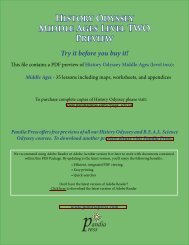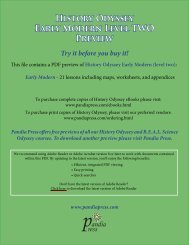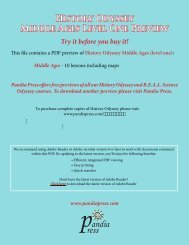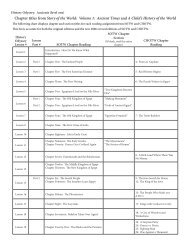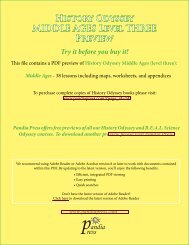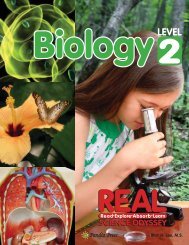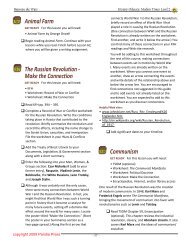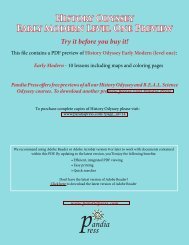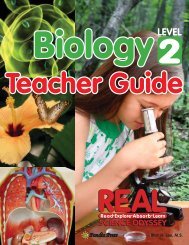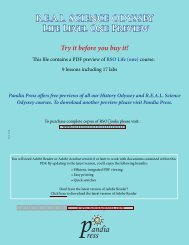History Odyssey - Ancients (level one) eBook Preview - Pandia Press
History Odyssey - Ancients (level one) eBook Preview - Pandia Press
History Odyssey - Ancients (level one) eBook Preview - Pandia Press
You also want an ePaper? Increase the reach of your titles
YUMPU automatically turns print PDFs into web optimized ePapers that Google loves.
Date: ________________<br />
Lesson 1 Learning About the Past<br />
Although it is outside the scope of these lesson plans, you may, depending on your beliefs, want to begin<br />
your study of the history of mankind with a study of Biblical creation, evolution, or both. You may want to also<br />
include a study of the creation stories of other religions and cultures. The first part of UILE and the first two<br />
chapters of CHOTW contain prehistory information. A good book that includes many creation stories from<br />
ancient civilizations (including Egypt, Babylonia, Greece, Africa, China, India, and America) is Marduk the<br />
Mighty and Other Stories of Creation by Andrew Matthews (The Millbrook <strong>Press</strong>, 1997, ISBN: 0761302042).<br />
Another great book that is referenced throughout these lesson plans is Amazing Mythology: A Book of Answers<br />
for Kids by Brendan January (John Wiley & Sons, 2000, ISBN 0471332054).<br />
Prep for Lesson 1<br />
☐<br />
Copy pages 3, 5, 7, 8, 9, 11, 13, 15, and 16 in your Evan-Moor <strong>History</strong> Pockets: Ancient Civilizations book.<br />
One copy of each page per child.<br />
Main Lesson<br />
☐<br />
Complete Pocket 1, “What is <strong>History</strong>?” in your <strong>History</strong> Pockets book. (See page 4 for directions.) If you<br />
three-hole-punch the pockets, these can also be placed in your history notebook until all pockets are complete.<br />
☐ Read SOTW Introduction: How Do We Know What Happened?<br />
☐ Use a children’s dictionary and help your child look up and define archaeology. Be sure to place this copy<br />
work in your child’s history notebook.<br />
☐<br />
Draw and color a picture about what was read in this lesson. Hints: tree ring, buried b<strong>one</strong>s with an archaeologist<br />
digging them up, or a family tree.<br />
☐ If you have Internet access, don’t forget to use the Web site offered in UILE on pages 200 - 201 with each<br />
lesson in this study guide. Once at the site, follow the directions on page 200, and click on the Encyclopedia<br />
of World <strong>History</strong> link. This will bring you to a page where you can type in the page number (in UILE) you are<br />
studying at the moment. Once you do this and click “Find Links,” you will be directed to a page with links and<br />
other useful information for the time and area you are studying.<br />
Book List<br />
Archaeologists Dig for Clues by Kate Duke (HarperCollins, 1997) ISBN 0064451755. A wonderfully illustrated<br />
book about a group of kids who are shown an archaeological dig and are told all about being an archaeologist.<br />
Highly recommended.<br />
Right Here on this Spot by Sharon Hart Addy (Houghton Mifflin, 1999) ISBN 0395730910<br />
Eyewitness Books: Archeology by Jan McIntosh (DK Pub., 1994) ISBN 0679965726<br />
I Can Be An Archaeologist by Robert B. Pickering (Children’s <strong>Press</strong>, 1997) ISBN 0516019090. Although a book<br />
for older children, it has live pictures and large print.<br />
Discovering the Iceman by Shelley Tanaka (Hyperion Books, 1996) ISBN 0786802847. Some of the pictures are<br />
graphic, but a good book.<br />
11



